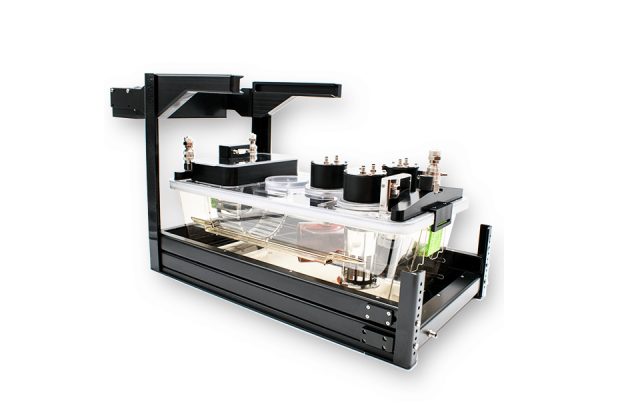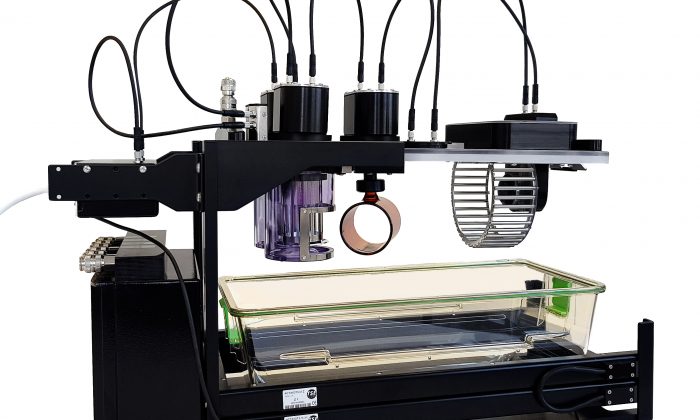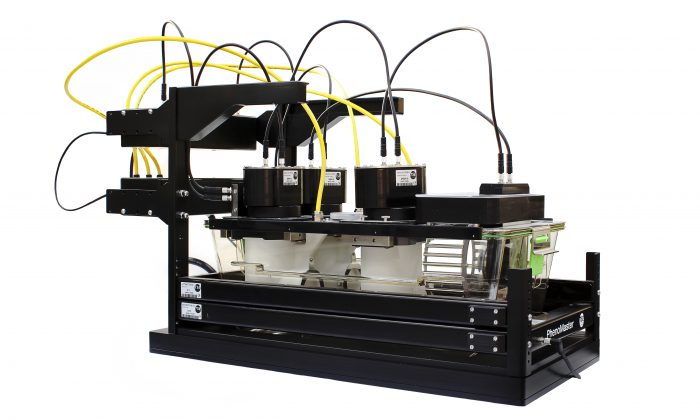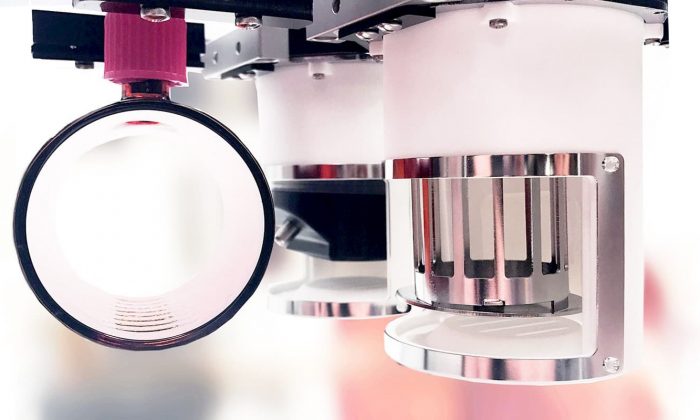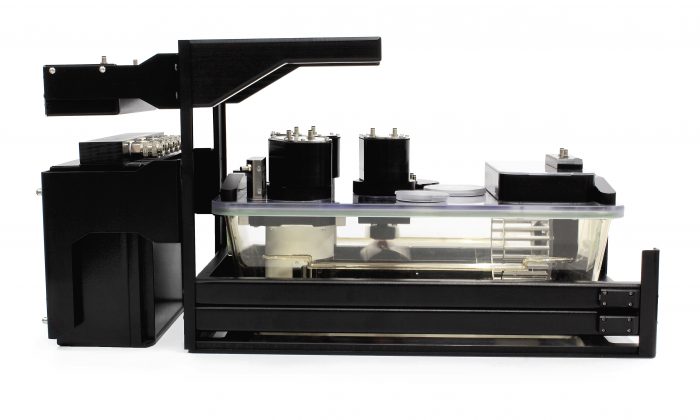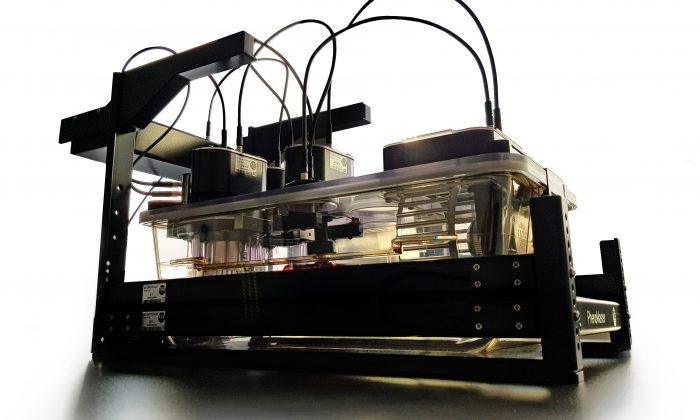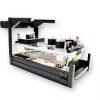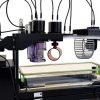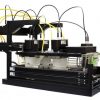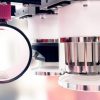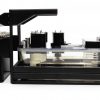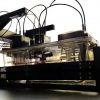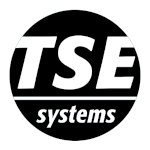PhenoMaster
Automated Home Cage Phenotyping
Product Enquiry
If you would like to send us an enquiry about this product, please click the button below, fill in the form and submit.
Product Enquiry
Product Enquiry
Please fill out the form if you would like to enquire about this product."*" indicates required fields
PhenoMaster
Automated Home Cage Phenotyping
The new Hardware and Software platform is not comparable to older generations of PhenoMaster and vastly more modern and economical in usage compared to competing systems. All modules have been completely re-developed to make use of the latest technologies. The analysis has been ported to an open data format (ODF) with full raw data recorded at the sensor level. The analysis features tabulation and visualization of all raw data points and derived parameters such as EE and RER while also allowing Matlab, Python code, and R-scripts such as via CalR to be executed. Simple analysis can be performed in the PhenoMaster software that can be freely copied, and advanced analysis and publication-quality graphics and statistical analysis are performed under Microcal Origin. The origin apps are free of charge and part of the PhenoMaster Data package.
System Architecture
In PhenoMaster, all data from sensors at the cage level are digitized on-board in the sensor housing and collected by the cage controller. The cage controller is the smart brain of every cage and powers all sensors. Sensors use a modern bus architecture that allows them to be removed and added without interfering with other sensors’ data collection ability. From the cage controller, a single Ethernet connection cable that also carries the cage power (POE = power over Ethernet) submits the data to the computer/server. Cages and Computers must be on the same intranet/subnet. Theoretically, all cages can be plugged into a single Ethernet hub on the back wall of the chamber and the computer located elsewhere in the building outside the animal facility. The result in the animal room is a clean, clutter-free laboratory environment with very few parts and a small footprint. When climate chambers are used, the cages are “plugged-in” into an Ethernet patch panel in the wall of the chamber.
Modularity gives flexibility at an affordable price
The number of options can be overwhelming. However, the greatly simplified “cage-based architecture” using industry-standard (Ethernet) combined with cage-based controllers makes changes, expansion of the number of cages, and upgrades very affordable and easy. Simply order the modules or number of cages that you want and ”plug and play.” In most cases, this can be done by the user. Rest assured that no matter where your research leads you, your investment is secure, and we are here to help you. Additionally, we can provide remote access to help guide you through the setup and measurement settings.
The PhenoMaster phenotyping platform is built around modules that can be added and expanded as flexible as the research questions or direction changes.
Features
- Three disciplines combined within a single automated home cage
- Cage based sensors and modules
- CaloSys does both PULL or PUSH mode
- Microbiome Activity Monitoring
- Food and Liquid Access Control
- Operant Wall integration
Research areas
- Hypoxia studies
- Optogenetics, compound infusion, microdialysis
- Metabolic studies & energy expenditure
- Drug Development
Disease models
- Diabetes
- Obesity
- Cancer
- Cachexia
- Exercise
- Metabolic Syndrome
- Rare Diseases
PhenoMaster systems are manufactured on a semi-bespoke basis due to their modular nature. Please contact us to discuss your specific requirements and one of our experts can assist you in configuring the optimal system to meet your research objectives
Brochure
Selected Publicatons:
Reynolds J.E., Lai R.W., Woodhead J.S.T., Joly J.H., Mitchell C.J., Cameron-Smith D., Lu R., Cohen P., Graham N.A., Benayoun B.A., Merry T.L., Lee C. MOTS-c is an exercise-induced mitochondrial encoded regulator of age-dependent physical decline and muscle homeostasis Nat Commun 12. 2021; 470: 1-11
Fischer K., Fenzl A., Liu D., Dyar K.A., Kleinert M., Brielmeier M., Clemmensen C., Fedl A., Finan B., Gessner A., Jastroch M., Huang J., Keipert S., Klingenspor M., Brüning J.C., Kneilling M., Maier F.C., Othman A.E., Pichler B.J., Pramme-Steinwachs I., Sachs S., Scheideler A., Thaiss W.M., Uhlenhaut H., Ussar S., Woods S.C., Zorn J., Stemmer K., Collins S., Diaz-Meco M., Moscat J., Tschöp M.H., Müller T.D. The scaffold protein p62 regulates adaptive thermogenesis through ATF2 nuclear target activation. Nat Commun 11. 2020: 2306-23019
Lucchini F.C., Wueest S. Challa T.D., Item F., Modica S., Borsigova M., Haim Y., Wolfrum C., Rudich A., Konrad D., ASK1 inhibits browning of white adipose tissue in obesity. Nat Commun 11. 2020; 1642: 15483-15487
Ruud L.E., Pereira M.M.A, de Solis A.J., Fenselau H., Brüning J.C. NPY mediates the rapid feeding and glucose metabolism regulatory functions of AgRP neurons. Nat Commun 11. 2020; 442: 14291-14293
Sun W., Dong H., Balaz M., Slyper M., Drokhlyansky E, Colleluori G., Giordano A., Kovanicova Z., Stefanicka P., Balazova L., Ding L., Husted A.S., Rudofsky G., Ukropec J., Cinti S., Schwartz T.W., Regev A, Wolfrum C. snRNA-seq reveals a subpopulation of adipocytes that regulates thermogenesis. Nature. 2020; 587(7832): 98-102
Selected Product Citations
Heterozygous Nme7 Mutation Affects Glucose Tolerance in Male Rats |
|
| Lucie Šedová, Jan Prochazka | Genes Basel | Published 18 Jul 2021 |
| Article Snippet At the age of 14 weeks, rats were trained for 1-day acclimation in metabolic cages.. One week later, indirect calorimetry measurement was performed using TSE Phenomaster system.. At the age of 17 weeks, an oral glucose tolerance test was performed. |
|
Pre-Diabetes Increases Tuberculosis Disease Severity, While High Body Fat Without Impaired Glucose Tolerance Is Protective |
|
| Roma Sinha, Minh Dao Ngo | Front Cell Infect Microb | Published 6 Jul 2021 |
| Article Snippet Whole body composition (fat and lean mass) was measured using a Bruker Minispec LF50H NMR instrument 7.5 MHz (Bruker Corporation, MA, USA) ( ).. A subset of five mice per group from the diet change experiment (at week 12 and week 22) were housed in single caging for 1 week for acclimatization followed by 3 days of metabolic profiling using the PhenoMaster System (TSE systems GmbH, Bad Homburg, Germany).. Energy expenditures including CO2 production (VCO2 ) and O2 consumption (VO2 ) were monitored for 72h and respiratory exchange ratio (RER) was calculated VCO2 /VO2. |
|
Inducing sterile pyramidal neuronal death in mice to model distinct aspects of gray matter encephalitis |
|
| Justus B. H. Wilke, Martin Hindermann | Acta Neuropathol Commun | Published 2 Jul 2021 |
| Article Snippet Mice (5 × tamoxifen) were anesthetized with ketamine and medetomidine (60 mg/kg and 0.4 mg/kg body weight), intubated and kept under 1.5% isoflurane by active ventilation with constant ventilation frequency of 85 breaths/min (Animal-Respirator-AdvancedTM, TSE-Systems).. After dark phase onset, voluntary running was automatically tracked for 4 h via Phenomaster software (TSE-Systems) and the total running distance per mouse calculated.. All MR measurements were performed at magnetic field strength of 9.4 T (Biospec®, Bruker BioSpin MRI, Ettlingen, Germany) comprising the following methods and acquisition parameters: High-resolution T2-weighted images (2D Rapid Acquisition with Relaxation Enhancement (RARE), TE/TR = 55/6000 ms, 8 echoes, spatial resolution 40 × 40 × 300 µm3 ), magnetization-transfer.. |
|

